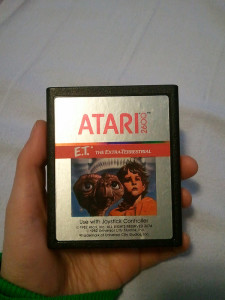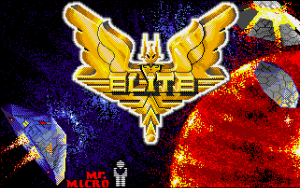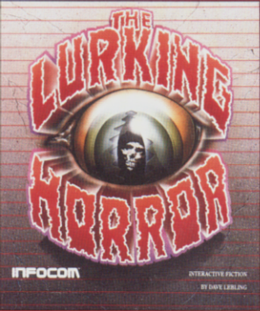Atari 2600 Landfill Dig Successful!
On Saturday, April 26, 2014, I watched folks live-tweet the excavation of Atari 2600 ET cartridges from a New Mexico landfill. A few hours after the dig began workers pulled up several cartridges complete with their packaging.

I’ve had this cartridge since I was five.
I played ET at home during the dig. I have the original cartridge (photo right), but I played using an emulator so I could post screenshots. I don’t remember finishing the game as a kid, but I beat it in an hour with the Stella emulator on the easiest setting.
Despite not finishing the game as a child, I think it says something that I saved the cartridge along with a handful of my other favorites through various moves over the years. It wasn’t until college that I learned the game had been a disaster for Atari and that the gameplay was considered poor and broken.
Overall, I think the game is okay. It’s possible the emulator made it easier to win, so I’ll have to try it again one day on a real Atari 2600. I’m glad I kept my copy, because the newly unearthed cartridges seem crushed and slightly melted.

 Playing Elite 1 for the first time on my emulated Amiga 1200 was the highlight of this past week in gaming. I had fun reading the Elite 1 manual; it went on at length about pirates and offered tips that seemed funny out of context, ex. “Don’t trade expensive trivia to a hungry world.” I also fixed emulation display issues with the game and hope to post a configuration guide once I’ve put more time into testing it.
Playing Elite 1 for the first time on my emulated Amiga 1200 was the highlight of this past week in gaming. I had fun reading the Elite 1 manual; it went on at length about pirates and offered tips that seemed funny out of context, ex. “Don’t trade expensive trivia to a hungry world.” I also fixed emulation display issues with the game and hope to post a configuration guide once I’ve put more time into testing it. The Lurking Horror is an H. P. Lovecraft inspired text adventure game by Dave Lebling, the author of Zork. Published by Infocom in 1987, it’s a spooky text-based look at college life. This is a no-spoiler review of the Amiga version.
The Lurking Horror is an H. P. Lovecraft inspired text adventure game by Dave Lebling, the author of Zork. Published by Infocom in 1987, it’s a spooky text-based look at college life. This is a no-spoiler review of the Amiga version.